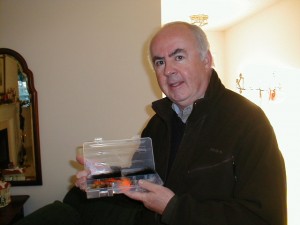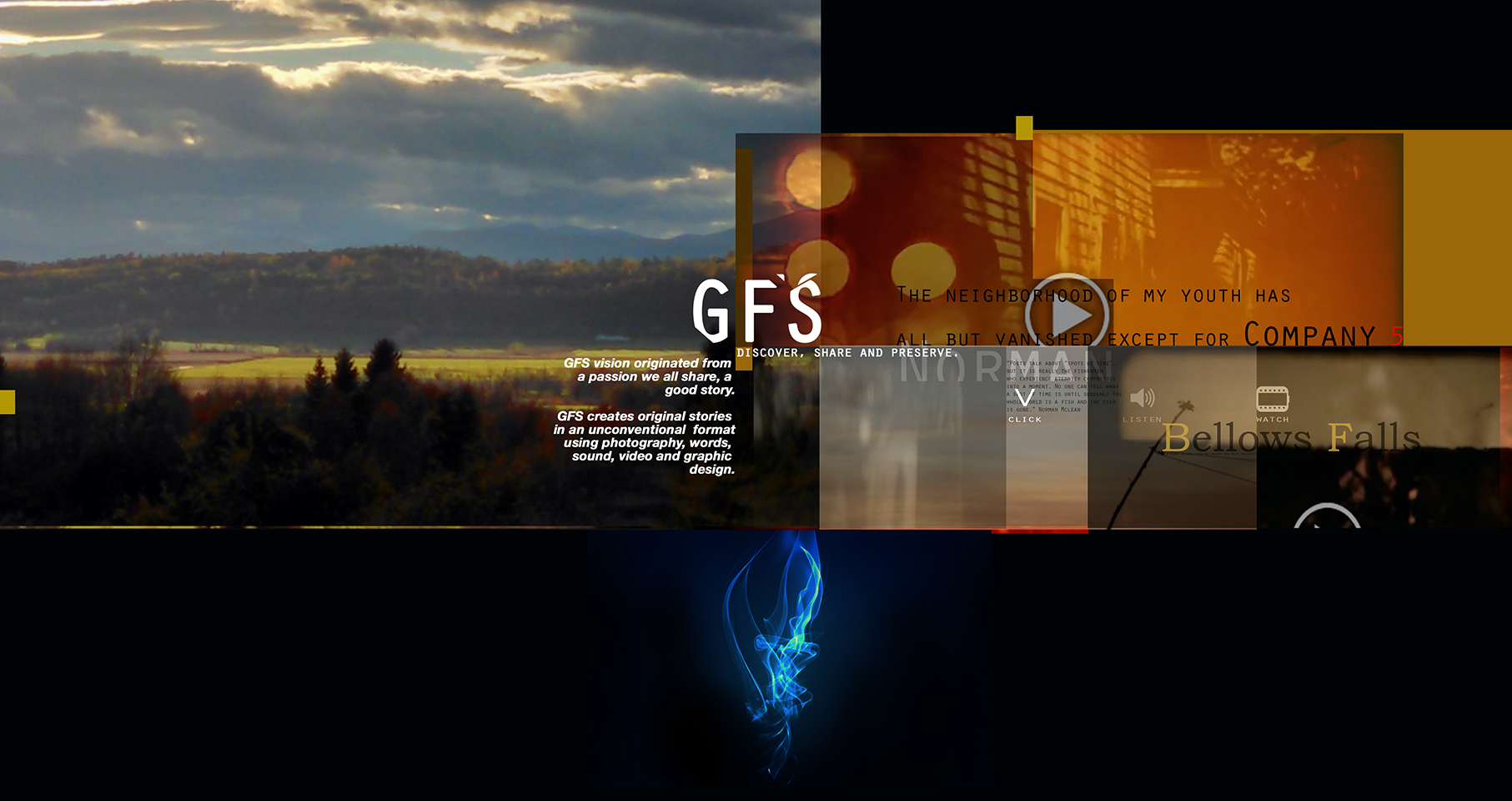Carp Run

[ezcol_2third]An excerpt from “Troutboomer” by Bill Anderson
Once, just before I received my first spinning outfit for my 10th birthday, I borrowed dad’s steel rod. He strictly forbid me to even touch it, but I believed that the mission was deserving of the considerable risk of discovery.
Each spring, around the middle of May, carp from the Christiana and the Delaware River, into which it flowed, would run up into the Brandywine. The first obstacle to their upstream progress was the Broom Street falls. The 10- foot highdam was designed to divert water for treatment and use by Wilmington residents. It presented a challenging barrier for the carp, not known for their jumping ability. Apparently, no one ever told these carp they could not jump! Hundreds of them would hurl themselves salmon-like, into the froth and with maximum effort, some would make it up and over the dam lip to the half mile long flat pool above. Here they found acres of weed beds and perfect shallows for carp spawning.
Augie and I stood eight feet above the river on the concrete abutment watching the leaping carp. We were in awe at the prospect of hooking and maybe landing one of these magnificent fish! Our little Zebcos and handlines, were quickly proven inadequate, as the fish, averaging fifteen and some as big as thirty pounds, would quickly break us off. That’s when I thought of dad’s telescopic steel rod with its casting reel and forty pound braided line standing in the bedroom closet. It was just what we needed to challenge the bronze bruisers from the river.
Armed with night crawlers and the heavy steel artillery we headed for the falls. On the first cast, I was very careful to thumb the reel to avoid a backlash. Unfortunately, the timid cast fell well short of the deep pool where the carp staged for their planned leaps.
On my second try, I risked it all. With a mighty sweep, the 2 oz sinker sailed over Augie’s ducking head and far out into the sweet spot! Elation soon turned into concern when I saw that the reel overran the cast and a significant backlash resulted. The snarl of black line looked like an eggbeater had its way with Polamalu’s hair!
Totally focused on picking at the massive tangle, I felt the soft tug….Instinctively, I struck hard…… and all hell broke loose!
One-step forward would have taken me off the concrete wall into the swirling river and rocks below. Augie made a lifesaving grab at my waist, as I held on desperately to the lurching rod. The effect was much the same as hooking the bumper of a passing semi on the highway! The reel, frozen by the snarl, tore off the small metal cleat holding it to the rod, then it shot up to the first guide, hesitated a millisecond then ripped forward to take the next three guides without pause. It was over… the way a train wreck is over…. There was nothing left but the steel shaft,permanently bent like a crescent moon!.......…………. I turned and threw it as far as I could into the Brandywine! My drill sergeant dad would never know.
Bill Anderson - the “Trout Boomer”
Son of an army staff sergeant from Delaware and his war time wife from rural Arkansas, the “Trout Boomer” grew up in Wilmington, a modest sized city,25 miles south of Philadelphia. His father, a 17 year army combat veteran, who never adjusted to civilian life, moved from job to job, taking his family from oneneighborhood to another. Bill (born at home in his grandparent’s house in Arkansasas “Billy Ray”) attended four different city elementary schools. His early Introduction to fishing came from his uncle Lawrence who took him to the “Nonesuch” Creek south of Wilmington for carp and catfish at the age of six. His early “home water” was the Brandywine Creek, which bisects Wilmington in a wooded gorge, surrounded by a city park. From age ten to sixteen, little Billy walked the ten city blocks nearly every day to catch the sunfish, carp and bass that swam there. Small for his age (4’9” as a 9th grader), Bill had to:
“…learn the daily life-skills required by always being the small and skinny “new kid” i.e.…
”Make a big friend, distract, negotiate and be prepared to run. I took refuge from my chaotic world by reading books and going fishing”.
The first ever in his extended family (including all prior generations on both sides) to graduate from high school, Bill graduated from the University of Delaware, with degrees in Mechanical Engineering and Business. For the last 34 years, Bill has lived in a solar log house in a mountain valley in central Pennsylvania, located just five miles from the Little Juniata River, with his wife,Carol Ann. They raised three children (all responsible, educated and married) and are now enjoying their two English Springers and four grandkids. Since retiring from his high pressure, executive management career in 2004, Bill and Carol opened a coffee shop in Tyrone, Pa.; Bill and a partner started and ran a fly shop located on Spruce Creek; and Bill has served as the leader of the Little Juniata River Association, a 501 c3 watershed conservation organization. In the winter months, Bill teaches fly tying, serves as a Score Counselor, and is the Senior Dog Handler for Hillendale Hunt Club. In season, the “Trout Boomer” is a professional fly fishing instructor/guide and conducts frequent tours on his beloved Little “j”.[/ezcol_2third]
PUTTING MY FINGER ON THE TRIGGER

[ezcol_2third]I have been fortunate to be part of a small group of fly fishermen and fishing guides who readily share information for pattern design, application of material, creative techniques and some really crazy ideas in the quest to deceive trout. Over the last thirty years there have been many “me too” designs and failures but there has been some real GOLD in these pursuits plus some great friendships. My tying techniques were initially grounded in the “Catskill” style but has evolved over the years. For me, effective design keys on profile, silhouette, material movement and triggers. Gary La Fontaine, Rene Harrop, Mike Lawson, Charlie Broe and Hans Weilenmann are a few of the tiers that have had a significant influence on my patterns which gravitate to impressionistic with a natural movement. One of the great fly concepts is the CDC & ELK introduced by Hans.I was intrigued by the application of the CDC and the tying technique as I already had many patterns combining CDC and elk that were productive but not special. My fly series, THREAD FLIES, already had proven that CDC movement and profile were very key for highly effective May fly patterns especially for very selective fish. Abandoning most of my old caddis patterns for the CDC and ELK was easy, it became my best producer. With a slight change to the body it also is “killer” as a TRICO cluster. I also noticed that swinging a wet sparse CDC & ELK during certain phases of the hatch would, at times, produce. A diving version was now my quest. My initial attempts failed as I drifted off course making the modifications too complex, altering its effectiveness. I needed a profile and trigger that could really get the fish going. I had added various color teardrops early on but had no noticeable success. After much trial and error I went back to my early teardrop variations searching for a difference maker...a small olive/gray parachute with a black post and amber antron shuck is my “go to” baetis. The X-CADDIS with amber antron is a favorite. With a beadhead for weight and a teardrop profile, viola, the amber teardrop diving CDC & ELK started to immediately produce. Just a slight change, but now I am confident during the hatching phases top to bottom. I vary the size and color of the CDC & ELK but not the color of the teardrop. I have received lots of feedback from fishermen and guides worldwide that like the results. In many places they fish it as a dropper off a small bugger and in the Box Canyon on the Henry’s Fork they drop it off a large stone fly. Give it a try and any feedback is appreciated!! Oh, well! Back to the vice…………. Chip[/ezcol_2third]

www.andesdrifters.com
https://www.facebook.com/chip.drozenski

